History of hostage-taking, after which came the term "Stockholm syndrome"
By Pictolic https://pictolic.com/article/history-of-hostage-taking-after-which-came-the-term-stockholm-syndrome.htmlThe term "Stockholm syndrome" means a mental condition which allows a person subjected to theft or violence to feel sympathy and compassion for the aggressor instead of fear and hatred. This is based on a psychological defense mechanism. The term was first used by criminologist and psychiatrist Nils Beiruta when he analyzed the unusual situation during the hostage-taking and robbery of the Bank Kreditbanken, which struck the whole world.
23 Aug 1973, escaped from prison criminal Jan-Erik Olsson walked into a Bank building on the square Norrmalmstorg in Central Stockholm, intending to Rob him, and cried out: "the Party's just beginning."
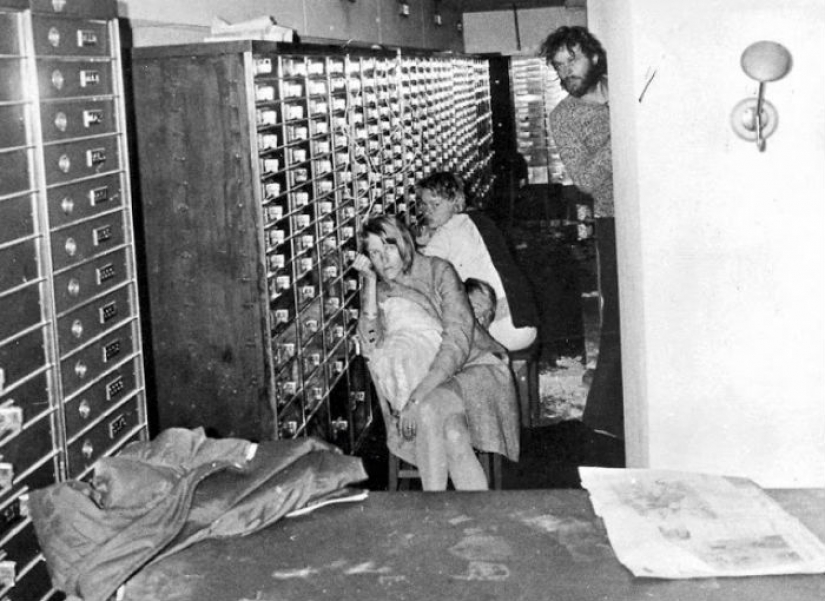

The robber took hostage three women — Birgitta Lundblad, Kristin Enmark,, Elisabeth Elggren and man Sven Sestrama and held them for 131 hours. Hostages he avesil explosive devices and sent to the Bank vault. The offender is required to deliver his friend and cellmate, Clark Olofsson. He asked for three million Swedish kronor, two guns, bulletproof vests, helmets and a fast car. Olsson was not new to the criminal world. He was accused of violent acts, and his first robbery he committed at the age of 16 years.

The photo was taken by the police on 26 August 1973, on the 4th day of holding hostages.
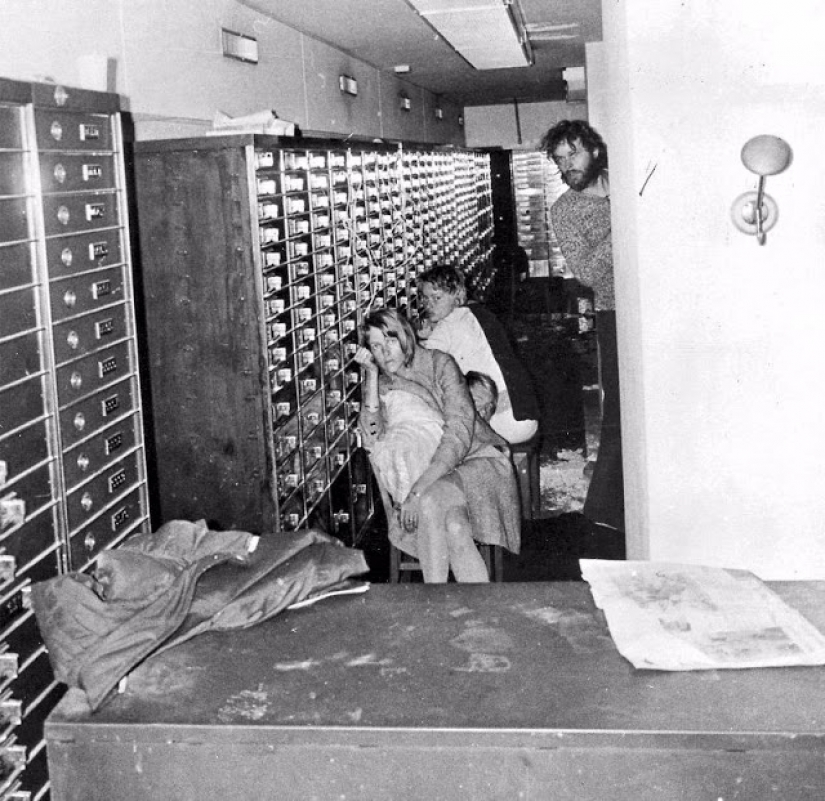
Police hiding behind cars during a robbery.
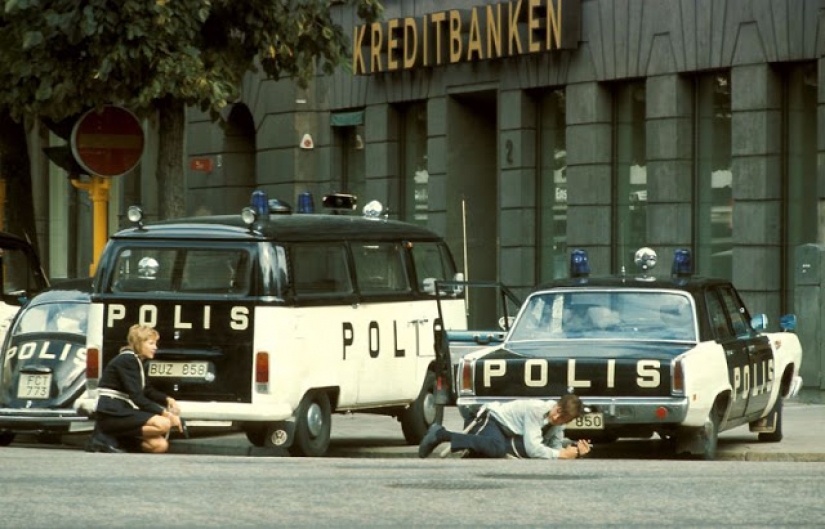
The snipers opposite the Bank, where the criminals were holding hostages.
On the third day of the kidnapping over radio reported that the police plans to drill a hole in the wall to carry out a gas attack. Of course, the kidnappers and their victims, too, listened to the radio. 28 Aug Jan-Erik Olsson began to lose patience and I went off, shooting the ceiling and injuring a police officer.

Police during the 4-day siege of the Bank.
At the same time the hostages are completely subordinate to the kidnappers, complied with all their orders, even sympathizing with them. Olsson later stated in court that "they made it so that we just could not kill them." In his memoirs, Olsson also wrote that "several times the hostages stood a human shield so the police didn't shoot us."

Police from the Bank.
At 9 o'clock the gas attack did take place, the agents were able to break into the Bank building and neutralize the criminals. During the operation to free Kristin Enmark shouted: "don't touch them, they haven't hurt us". And at the exit from the Bank in front of hundreds to them of the cameras of the press, she threw Clark Olofsson: "see you soon".
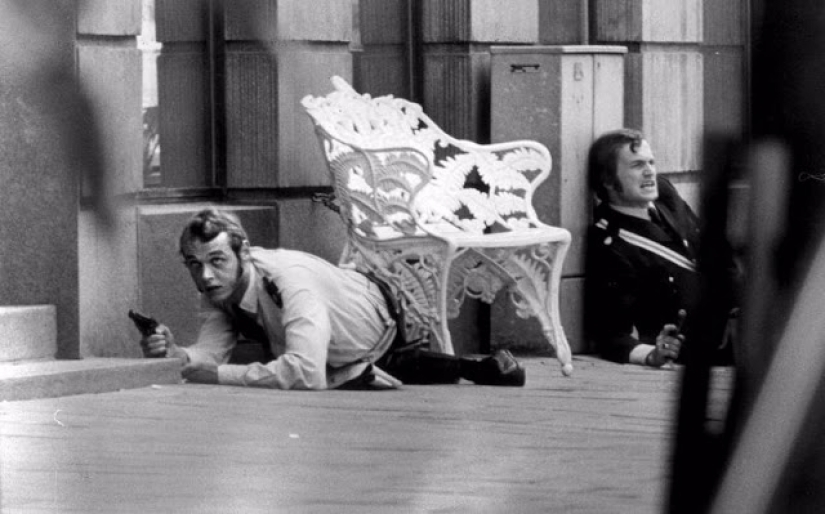
The Arrest Of Jan-Erik Olsson.
Behavior Enmark and the rest of the victims plunged the country into conflict. "I'm not afraid of them, but I fear the police," said Enmark. , Elisabeth Oldgen later admitted that he considered Olsson "very good", as it allowed her to move when she was lying on the floor of the Bank. Sefstrom told you that I was even grateful to the kidnappers. "When Olsson treated us well, we considered him almost a God".
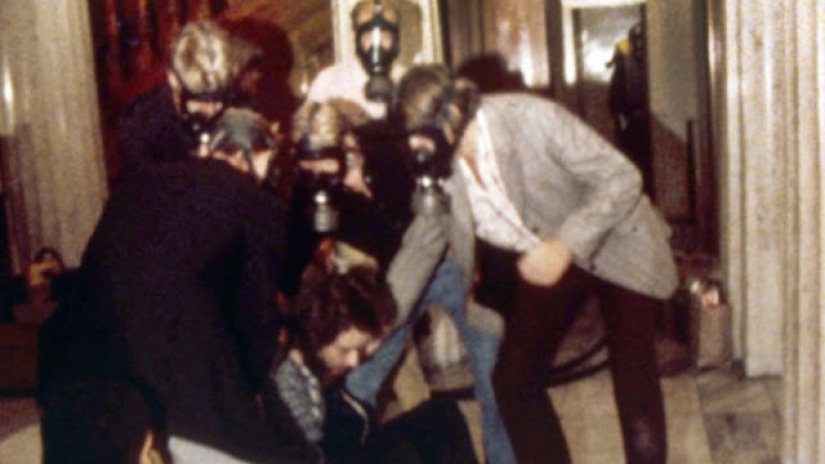
Jan-Erik Olsson (pictured) was amnestied after 8 years in prison and, after relapsed and was in the national and international wanted list, has moved to Thailand with his family. By the way, in prison Olsson received many letters from fans, one of whom later married.
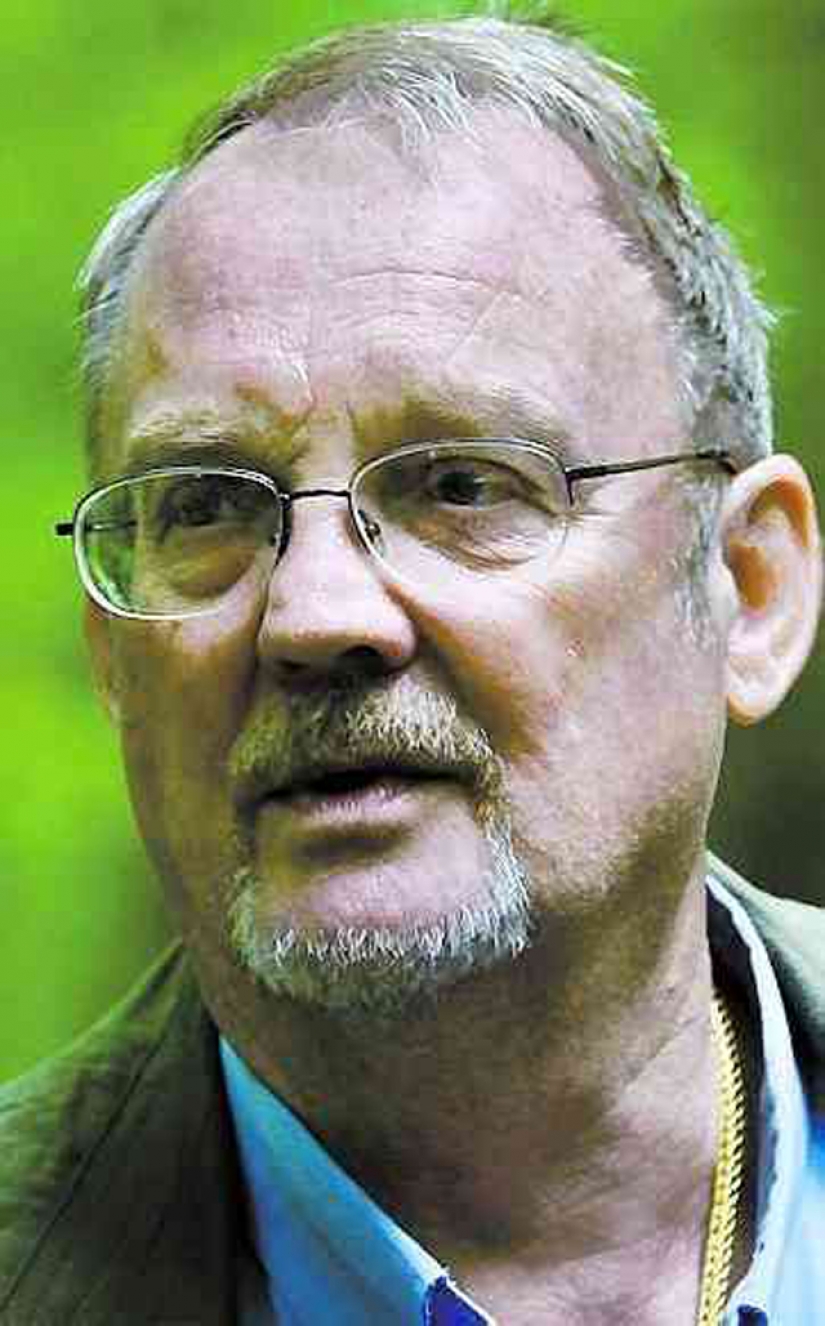
Police in gas masks derive Olsson in handcuffs.
"We questioned a lot of days after release, but nobody cared to our needs and desires, they only asked about the Stockholm syndrome," recalled Enmark. Later she resigned from the Bank, studied sociology and became a therapist for drug addicts, wrote and published a book "I had Stockholm syndrome" (I Had Stockholm Syndrome).

Kristin Enmark.
Enmark admitted that he felt something special for one of the criminals, Clark Olofsson. Even after a few months after her abduction, she continued to regularly visit him in prison, to exchange letters.
Keywords: Banks | Hostages | Robbery | Criminals | Psychology | Syndrome | Stockholm
Post News ArticleRecent articles

More than 1,500 amateur photographers sent their wonderful pictures of large and small animals to the competition, and the jury ...

It just so happened that the kings of France were not in good standing with the people. The monarchs had a reputation as ...
Related articles

Modern children often get sick – colds, allergies, and so on. Although in our childhood everything was the same. When we noticed ...

The rich heiress Patricia Hurst, brought up in the best traditions of high society, has entered the annals of forensic medical ...

The Pink Panthers are a legendary criminal group that includes hundreds of people. The backbone of the organization were Serbian ...

Today, vitiligo is a common occurrence. Of course, people with this disease stand out externally, but they are only given special ...